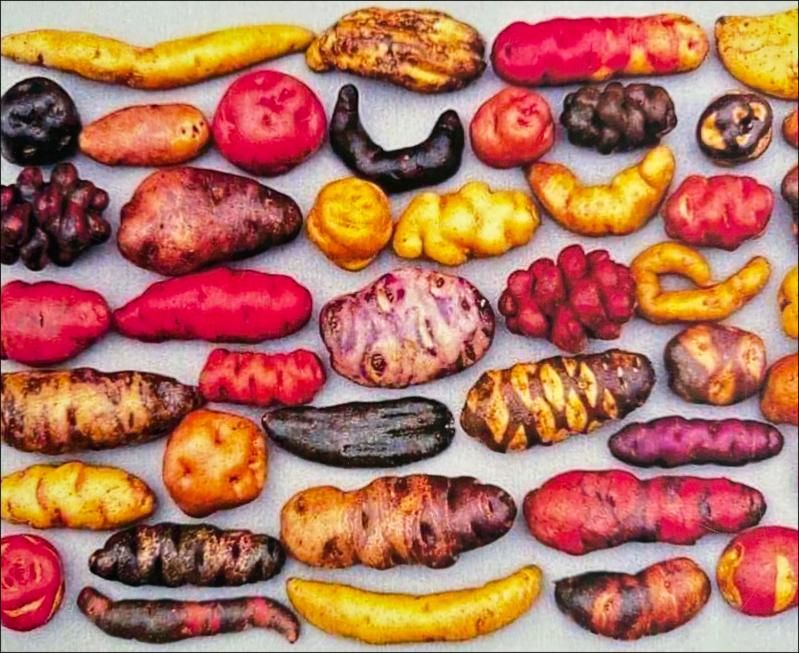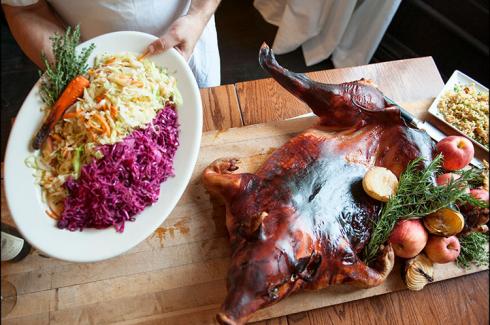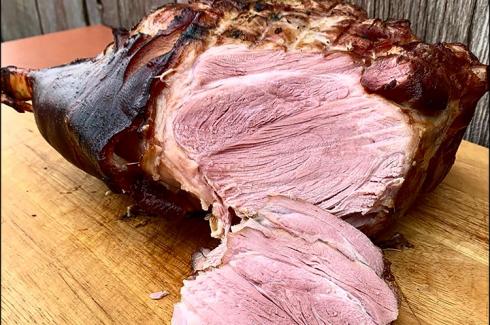“I Say Potato,” a multimedia art exhibition exploring the humble spud’s deep roots in Long Island’s cultural and agricultural soil, will open Friday at the Bridgehampton Museum with a reception from 6 to 8 p.m. The show includes paintings, sculpture, and video by more than 30 artists, as well as a treasure trove of potato-related ephemera.
The show has been assembled by Mark Wilson, an artist based in Springs who, it can fairly be said, fell down a rabbit hole during the process.
His own experience goes back at least five or six years, when he made a stack of artificial potatoes and welded a little stand so they would stack up and appear to be balancing — “almost like a Brancusi,” he said during a phone conversation.
Around the same time, he and a friend decided to rent a booth at the Outsider Art Fair in Manhattan. Once committed, he realized he had just a short time to determine what he was going to show.
“I came upon some photographs of a man named Antone Almeida, an African-American from Fairhaven, Mass. In one, he’s holding his hands in the air, and in front of him is a group of misshapen potatoes that he’d grown himself. He was obviously a self-taught artist.” Mr. Wilson took those photographs to the fair, and they are included in the show in Bridgehampton.
More recently, Mr. Wilson was told that if he was going to do a show about potatoes, he had to meet Jeffrey Allen Price. “I located him in Mastic. He teaches art and he has been doing the potato theme for 28 years. He has amassed more than 6,000 items. Who knew?”
Mr. Price’s contribution to the exhibition is a video in which 62 people say the word “potato” in 62 languages. “You start going down a path just for the hell of it, for the fun of it,” said Mr. Wilson. “What am I going to discover next? A lot of things have been revealed.”
One is a photograph by Pipi Deer, a Sag Harbor artist who often uses her body as a performance element. In the photograph she is naked, curled up in a ball on the ground like a potato, wearing only a bonnet. That bonnet belonged to her grandmother, who escaped the Irish potato famine in the 19th century. “That put shivers down my back,” said Mr. Wilson.
“The idea of the exhibition is memory of place,” he said. “Even if we don’t always recognize it, the legacy of the potato influences how we live, farm, create, and remember.” He added that the name Sagaponack is the Shinnecock Nation’s word for “land of the big ground nuts.”
Among the many local artists in the show are Steve Miller, Almond Zigmund, Idoline Duke, Ned Smyth, Suzannah Wainhouse, Peter Dayton, Scott Bluedorn, Saskia Friedrich, Carrie Barrett, James McMullan, Veronica Mezzina, and Mr. Wilson, to name only a few.
The ephemera include a few farming implements, one of which is a pitchfork, atop which sits a globe of the world with a big arrow pointing to a site on the border of Peru and Bolivia where, so it’s said, potatoes were first discovered. “The Conquistadors went there and enslaved the Indigenous people to discover gold, but they found the potato instead.”
Joseph Beuys was an influential German artist who influenced Mr. Wilson, who lived for a time in Darmstadt, Germany, near a museum that held Beuys’s work. Mr. Wilson combined a postcard of a photograph of Beuys, taken by Andy Warhol, with a quotation from the German artist: “Even the act of peeling a potato can be an artistic act if it is consciously done.”
Others of his discoveries include a photograph of Marilyn Monroe in a potato-sack dress, Mr. McMullan’s drawing of Long Island as a big potato off the coast of America, an 1886 needlepoint by the Swiss artist Albert Anker of a girl peeling potatoes, nostalgic photographs of potato-farming life, and an exceptionally long French fry, shown along with the device that produced it.
According to the museum, “Featuring artists from across the East End working in diverse mediums, ‘I Say Potato’ honors the region’s agricultural heritage while offering fresh perspectives on its contemporary cultural landscape . . . it’s about history, root systems, memory, and tactile sculptures that invite new sensory understandings of what lies beneath the surface.”
As if Mr. Wilson hasn’t been busy enough, a solo exhibition of a new body of his work will open at the Sagaponack Farm Distillery, 369 Sagg Road, on Saturday, with a reception from 4 to 7. In part, he said, the show is a reaction to A.I., “because that has been a big thing in the press. My things are called I.O.U., which stands for ‘It’s obviously unintelligent.’ ”
“I Say Potato” will be up through June 28. Mr. Wilson’s show at the distillery will run through June 30.




